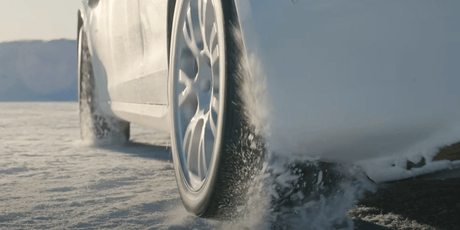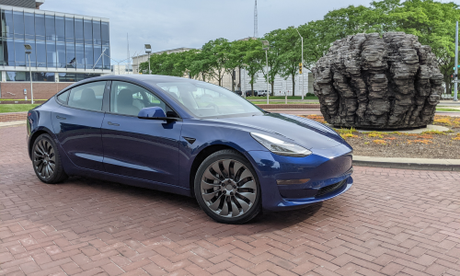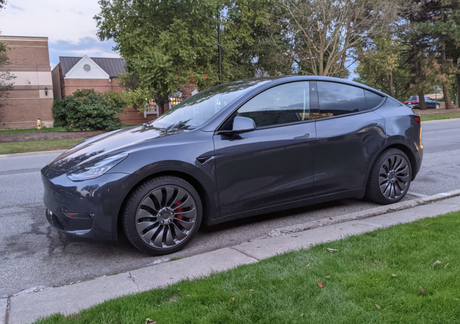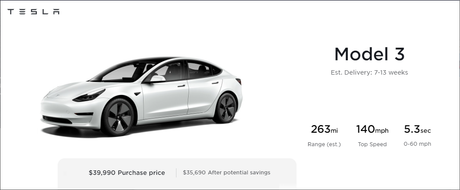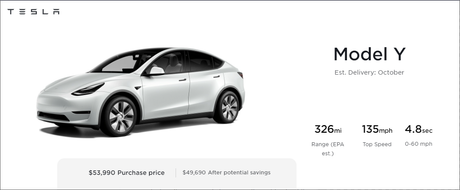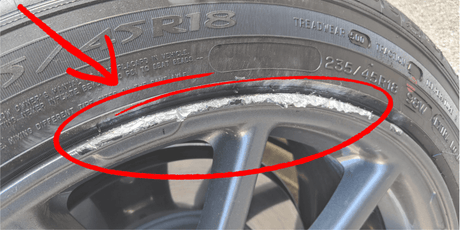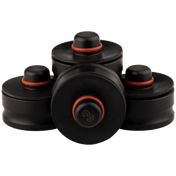
22 Tesla Cold Weather Tips - How To Get Max Winter Driving Range
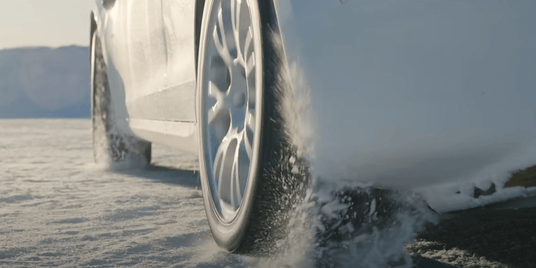
Why Do Electric Cars Have Less Range In Cold Weather?

There are four main reasons why electric cars lose range in the winter: air resistance, battery behavior, cabin heating, and slippery / snowy roads.
Air Resistance:
The main culprit that increases vehicle energy consumption during the winter months is increased air resistance. Every vehicle on the road suffers from this... especially large, non-aerodynamic vehicles like vans and trucks. Cold air is more dense than warm air, therefore it's more difficult for a moving vehicle to push through it. Aside from making your vehicle more sleek and aerodynamic, which we don't have a ton of control over, there isn't much that we can do about this fact.
Battery Behavior:
Another, less important factor is battery behavior... which we do have some control over (see tips below). The chemical batteries under our floorboards behave sluggishly when they're cold, and when that happens, our cars don't operate efficiently and they consume more energy for every mile driven. Once they're heated up, though, this problem is minimized.
Cabin Heating:
The third major contributor to decreased cold weather driving range in EVs is cabin heating. ICE (internal combustion engine) vehicles emit enormous amounts of waste heat from their engines when they run, and engineers discovered decades ago that you can harness some of that heat to keep the passenger compartment toasty warm. Because our Teslas don't have large, heat-generating engines under the hood, they need to primarily use energy stored in the battery to keep us warm during our travels. Using the "butt warmers" in our seats helps to minimize this energy drain, but it's still a factor that contributes to range loss in the winter months.
Slippery / Snowy Roads:
Yet another contributor to range loss is driving on wet, snowy, or icy roads. Like driving through cold, dense air... this can be a considerable energy consumer for all vehicles (EV and ICE). When you drive on slippery roads, especially under icy conditions, the tires lose their grip on the road and the car is forced to work harder and use more energy to propel you forward. This is also true when you drive through snow, since the car needs to deal with slippage as well as the added force of physically pushing through the snow... sending rolling resistance through the roof.
How Do I Maximize My Tesla Range In the Winter?
Below is a collection of 22 tips and tricks that you can follow to maximize your range when driving your Model 3, Model Y, Model S, or Model X in freezing weather. Some of them are things that you can do before you leave on your trip, and the rest you can do while driving.
Things You Can Do To Maximize Your Range Before a Cold Weather Trip

1. Plug In Daily
If you have the ability to plug in your car where you park, then it's highly recommended that you do that daily... especially during the cold winter months. All EV batteries lose some of their charge when they're parked, and it happens more quickly in cold weather. If you park your car overnight in cold weather, then the next morning you'll unfortunately find that your battery has lost some of its charge... and therefore your car has lost some of its driving range. Plugging in guarantees that that doesn't happen to you.
Also, rather than using energy from the battery to preheat the passenger compartment and do other preconditioning before you drive, that energy is drawn through the charging port... preserving the charge that's in your car's battery. If you have the ability to charge on a higher-voltage circuit (e.g. 240V in the U.S.), then do so. If you don't have access to a higher-voltage circuit where you park your car, then consider having one installed if possible. The faster, higher-current charging option is far superior to the standard 120V (U.S.) option. Either way... always plug in when parked if you can.
2. Use the 'Scheduled Departure' Feature
If you get in your car at a predictable time each day, then you can take advantage of the Scheduled Departure feature. By telling your car what time you'd like to leave for your drive, it can determine the best time to start charging its battery (assuming that the car is plugged in) so that it's at your desired preset charge level when you want to leave. This not only offers the benefit of a warm cabin when you climb into the car, but because the battery has just been freshly charged, it's also warm and ready to function most efficiently. Driving with a cold battery doesn't make the most efficient use of the energy stored there.
3. Preheat Before You Leave
Whether you use the 'Scheduled Departure' feature or you manually wake up your car and warm it up from the mobile app, a warm car works more efficiently than a cold car. A preheated battery will provide the most range, as chemical batteries (upon which all EVs are built) don't function well when they're cold.
Also, assuming that the car is plugged in, preheating the cabin will be performed using energy from the charge port... rather than depleting the battery. If you wait until after you leave before warming up the cabin, then the battery needs to supply power to drive the car as well as to heat the cabin... which will shorten your driving range. If you park outside and your windows need to be defrosted before your drive, then taking advantage of the plug will be helpful here as well.
Finally, if you haven't planned ahead and preheated your car before leaving, then you may see a blue snowflake icon on your car's screen... indicating that the car hasn't been adequately heated, so acceleration may be limited, and more importantly, regenerative braking (a.k.a. "regen") may be limited. Regen is an important way to recharge your car's battery while you drive, so this is another reason to preheat your car so that you can take advantage of this valuable feature.
4. Charge to 100% Before a Long Trip
Although the manufacturer recommends that you not charge your car to 100% regularly, if you charge at home and you're planning to leave for a long trip, charge the battery to 100% before you leave. This extra range may be really useful when driving in cold weather and your battery is drained more quickly than normal. Remember to return the charge level to normal (e.g. 70% - 90%) after you've returned from your trip.
5. Park Indoors If Possible
If you have a garage but you use it for storage and park your Tesla outside, then you may want to reconsider that decision and make some room to pull Tessie inside during the cold weather months. Even if the garage is unheated, parking indoors will keep the car slightly warmer than parking outdoors... which makes it a bit easier to precondition and warm the car before your next trip. Plus, you won't need to waste time and energy melting and removing the snow and ice from the car before driving.
6. Check Your Tire Pressures
Before driving, especially before a long trip, make sure that your tires are properly inflated to the recommended tire pressure shown on the sticker in your driver's door opening (typically 42-45 PSI). If you drive on tires that have low pressure, then you'll experience higher rolling resistance... which will consume unnecessary energy while driving. Even if you're not concerned about winter weather driving range, it's a good idea to check the air pressure in your tires because cold weather usually results in a pressure drop. Less-than-fully-inflated tires can cause uneven wear... and new tires aren't exactly cheap.
7. Remove External Accessories
If you've installed a roof rack, a rear-mounted luggage or bike carrier, or anything else on the outside of your car that increases wind resistance, then remove it when not in use to make the vehicle as sleek as possible. The easier the car slips through the cold, dense air, the further you'll be able to travel on a single charge.
8. Use Narrower Wheels and Tires
Wide wheels and tires look great on your car, but they have the negative effect of increasing rolling resistance due to the increased friction between the wider tire and the road... which consumes more energy and decreases your driving range. If you can replace your tires with something a bit narrower -- even if it's only a half inch (10-15mm) -- then you'll see an improvement in your driving range year-round. Some Tesla owners splurge on a second set of wheels and tires for winter driving; although they typically mount snow tires on this second set of wheels for better traction, you could also simply get a narrower set of wheels and tires for better cold weather driving efficiency.
9. Use Aero Wheel Covers
If you have a Model 3 with the 18" Aero wheels, a Model Y with the 19" Gemini wheels, or a Model S with the 19" Tempest wheels, then be sure to use the factory-supplied snap-on plastic wheel covers to improve the aerodynamics of your car. This allows your car to slip through the air a bit more easily, thus slightly reducing the amount of energy your car needs to drive. Some people remove the wheel covers because they prefer the appearance of the aluminum wheel underneath, but if you want to squeeze every last bit of range out of your battery, then snap them back onto your wheels for the winter. You can always take them back off in the spring to show off the nice-looking wheels underneath.
10. Avoid Winter / Snow Tires If Possible
Winter / snow tires -- although some people swear by them -- have a negative effect on energy consumption and driving range. Winter tires are made of a softer rubber compound and have more small cuts (a.k.a. "sipes") in the tread than all-season or summer tires, so the rubber is more flexible and offers better traction. However, this causes them to have a higher rolling resistance than other tires... resulting in a loss of range. If you live in an area where traction is more important than range (you often drive in snowy or icy conditions rather than simply wet or dry roads), then you may choose to drive on winter / snow tires. If range is more important -- especially if you only see one or two heavy snows per season, then perhaps a good all-season tire is a better choice.
11. If Not Plugged In, Disable Sentry Mode and Limit Remote Access Via the Mobile App
If you aren't able to plug in your Tesla when parked, then you may consider disabling Sentry Mode, which famously consumes energy even when nothing is happening... and it consumes even more when it's triggered. If you park in a busy area where people walk near your vehicle, then do yourself a favor and turn off Sentry Mode in the winter and save some energy.
12. If Not Plugged In, Limit Remote Access Via the Mobile App
Anytime you access the vehicle remotely via the mobile app, the car 'wakes up' from sleep mode and starts consuming energy. If you aren't able to plug in your Tesla when parked, then consider letting Tessie sleep more, as it will save you a bit more energy... and sometimes every little bit helps.
Things You Can Do To Maximize Your Tesla's Range During a Winter Trip

13. Use the In-car Energy App To Monitor Your Energy Usage
The Energy app on your vehicle's touchscreen provides a really, really useful visual representation of your vehicle’s real-time and projected energy usage while you drive... and more importantly, it calculates your remaining driving range based on recent driving history. Like to stomp on the accelerator pedal? Like to cruise at 80-90 MPH on the freeway? The Energy app will show you exactly how much energy you're consuming when you do those things... and how it causes your range to drop. It makes you hyper-aware of your driving habits and how they affect your range.
On the other hand, if you chill out, drive more smoothly, and drop your highway speeds a bit, then the Energy app shows how much the car will reward you with increased efficiency and range.
14. Enable Regenerative Braking
Regenerative braking (a.k.a. "regen") recaptures the kinetic energy of the moving car and uses it to recharge the electric vehicle's battery when you slow down... instead of losing that energy in the form of friction and heat through the brake pads. If you'd like to see how much regenerative braking feeds energy back into your battery, enable regen and watch the Energy app every time you slow down.
Some people recommend that you disable regen during the winter to avoid losing control of your vehicle on slippery roads, but once you master the skill of "one pedal driving", you should be able to avoid dicey slippery road situations by applying just enough force to the "go pedal" so that power isn't applied to the wheels... and regen isn't yet enabled. Once you've got this mastered, then you can reap the benefits of regen to give your battery an added boost when driving in cold weather.
15. Lower the Cabin Temperature and Use Seat Heaters
To Stay Warm Internal Combustion Engine (ICE) powered vehicles are horribly inefficient in their conversion of liquid fuel energy into kinetic energy (motion); most of the energy stored in a gallon of fuel (60% - 70%) is converted to heat and lost in the atmosphere. One small benefit, though, is that some of the heat from the engine can be pumped into the cabin to keep passengers warm in cold weather. Since EVs don't have this abundant source of waste heat, they rely on their battery to generate heat for the cabin.
Instead of heating the entire volume of the passenger compartment, lower the temperature and use the seat heaters (and the heated steering wheel, if you have one) to stay comfortable, as they do a more efficient job of keeping you warm. Seat heaters are more efficient at keeping us warm because the heat is absorbed directly through our butts, rather than blowing warm air into the entire volume of the cabin, which then warms us... as well as unnecessarily warming the floor, the doors, empty seats, the windows, and the roof.
16. Limit Acceleration and Use Chill Mode
The Energy app on your touchscreen shows us that smashing the "go pedal" to the floor, although fun, unnecessarily consumes a lot of valuable energy. If you want to stretch your driving range as far as possible, then use slower, more gradual driving.
'Chill Mode' is a feature that limits your acceleration and forces you to drive more smoothly, which saves energy while you drive. If you'd like to see how much stomping on the "go pedal" drains energy from your battery, check the Energy app.
17. Maintain a Steady Speed
Rather than speeding up, then slowing down, then speeding up again during a trip... try to maintain a constant speed as much as possible. Every time you slow down, then speed back up, you consume more energy than simply maintaining a steady speed.
Even if you have regenerative braking (a.k.a. "regen") enabled, the regen only recaptures a fraction of the energy when you slow down after an acceleration. People who have studied regen have stated that regenerative braking only recaptures up to 80% of the energy lost. For example, if you drive up one side of a mountain (consuming extra energy) and coast back down using regen, you only recoup up to 80% of the energy consumed driving up. You've started and ended at the same point, and you've lost 20% or more of the energy in your battery in the process.
18. Slow Down
Cold air is more dense than warm air as described above.. and driving fast through cold, dense air requires more energy than driving more slowly through the same air. Reducing your speed on the highway by just 10-15 mph (or 15-25 kph) has a noticeable effect on your energy consumption when driving. If you'd like to see how much energy is saved, slow down a bit and check the Energy app; it will recalculate a new projected range if you continue driving at the new, slower speed.
19. Use Autopilot
If you're an aggressive or erratic driver, then you can benefit from using Autopilot... especially on long highway trips. Any sudden changes during driving, including acceleration, lane changes, and braking result in wasted energy. Using Autopilot instead of manual driving can save energy through smoother driving, braking, lane changes, and other tasks that don't involve driving in a straight line at a constant speed. You can even optimize your energy consumption with Autopilot by maximizing its following distance and setting the lane change speed to 'Mild'.
20. Set Climate Controls To Auto
Rather than blasting heated air into the passenger compartment, set a comfortable cabin temperature and let the software automatically turn the heat on and off as needed. The software will likely do a more efficient job of maintaining your comfort than you would otherwise do manually... generating just enough heat to maintain that desired temperature. Increased efficiency means less energy used... which ultimately leads to increased driving range.
Also, as stated earlier, if you can use the seat heaters (also set to auto) and heated steering wheel (if your car is equipped with that option) to stay comfortable and reduce the cabin temperature, then you'll see even more benefit.
21. Use In-car Navigation En Route To Supercharging
If you plan to stop at a Supercharger during your trip, then use the in-car navigation to direct you to the charging location... even if you already know the best route. By using the built-in navigation features, you're notifying the car of your intent to Supercharge, so it will attempt to precondition the battery en route for fastest charging time... thus maximizing the amount of charge (and therefore extra range) that you receive while you're plugged in.
22. Combine Trips If Possible
The longer your car sits idle between trips, the colder it will get... and the more time and energy that you'll need to warm it up again... especially if you're not plugged in. If you can combine trips and make multiple shorter stops during the same trip, then your car will have less time to cool off... and it will take less energy to heat it back up again for the most efficient operation.
Bonus Tips For Driving a Tesla In Freezing Weather
Although the following tips won't necessarily improve your battery range, they'll definitely help to make your winter driving experience a better one.
Defrost Your Car After Washing:
If you like to keep your beautiful Tesla clean in freezing temperatures, then remember that things will likely freeze after you park your car because water will get into door handles, door seals, and window seals. To avoid needing to crack everything loose the next time you drive, heat up your car thoroughly from the mobile app before your next drive.
Use Wiper Service Mode:
If you park your car outdoors and you're expecting freezing rain or snow, then use wiper service mode (available via the in-car touchscreen) to raise the windshield wipers up out of their hiding spot and onto the windshield. This makes them more easily accessible for cleaning before your next drive.
Disable Mirror Auto-Fold:
If you park your car outdoors and you're expecting freezing rain or snow, then disable the mirror auto-fold feature via the in-car touchscreen to avoid the mirrors freezing in the folded position.
Unlatch Frozen Model 3 & Model Y Doors From the Mobile App:
If you drive a Model 3 or Model Y and you find that your door handles are frozen in-place, you can unlatch the driver's door via the mobile app; you'll need to press and hold one of the existing quick control buttons on the app's home screen, which will expose several other options including a button to unlatch the door. Drag the button up to replace one of the other quick control buttons that you don't need.
Clean the Backup Camera Before Driving:
Driving on snowy, wet, slushy, salted roads quickly results in a dirty backup camera... making it difficult to see behind your car when backing up. Before you get in the car for your next drive, take a moment to quickly wipe off the camera above your rear license plate so that you can see again. (I just lick my thumb and give it a quick swipe!)
Clean Autopilot Sensors and Cameras Before Driving:
Driving on snowy, wet, slushy, salted roads quickly results in dirty Autopilot cameras and sensors... which may prevent you from using Autopilot on your next drive. Before you get in the car for your next drive, do a quick walk-around and wipe off any cameras and ultrasonic sensors that have a nasty buildup of gunk.
Refill the Washer Fluid Before a Long Trip:
Don't find out in the middle of a long trip that you just ran out of windshield washer fluid... right when you need it to keep your windshield clean on wet, sloppy roads. Always keep a bottle of wiper fluid handy at home, and when you're getting ready to leave on a long winter trip, pop open the frunk and top off the fluid reservoir.
Grab Your Mobile Connector For a Long Trip:
If you purchased a mobile charging connector / cable for your car, then make sure to bring it on a long trip... just in case you find yourself in an emergency situation where you need to make an unplanned stop to charge your car. Don't forget to also grab any adapters that you may have, such as a NEMA 14-50 adapter, and bonus points if you have a heavy duty extension cable. Hopefully you never need to use it, but if you desperately need to charge and there aren't any Superchargers nearby, then you could potentially make use of non-traditional charging options such as a campground, a marina, or even a hotel that has available outdoor outlets.
Get a Little Extra Charge:
The in-car software typically does a good job of calculating how much charge you need to make it to your destination or your next Supercharger stop... but it can't predict situations such as sudden traffic delays, wait times at the next Supercharger, or non-functional chargers when you arrive. If you need to unexpectedly drive to another charging location or wait a long time before you can plug in upon arrival, then you'll be glad that you took on an extra amount of charge before you hit the road. Staying plugged in for an extra 10-15 minutes will give you some extra breathing room that should make the next leg of your drive less stressful. Of course be courteous to other folks who are waiting to charge; if there are many people waiting in line to plug in, then you'll want to weigh that against the amount of comfort that you'll get by waiting.
Don't Rely Solely on Tesla Superchargers:
Tesla isn't the only game in town when it comes to high-speed charging stations. If you haven't done so already, download the PlugShare app to your phone and use it to find alternate places to plug in along your route. Tesla generally has the fastest DC fast chargers available, but other charging networks also have charging stations that are quite fast. If Superchargers are full, or if they're not in a convenient location for you, then you may find other good options via the PlugShare app. When planning your next trip, check for other options along your route that offer DC fast charging... and check whether you need a charging adapter to use it with your car. It may be a good idea to purchase a CCS adapter and keep it in your car so that you have more charging options.
Check For Hotels With Chargers:
If you're planning a long trip that involves staying at a hotel, then use the PlugShare service (via their website or app) to look for hotels that have electric vehicle chargers available. If you can plug in while you sleep, then you'll be happy to have a full battery when you leave the next morning. Don't assume, however, that their chargers will always be available; as more people buy electric vehicles, the chances are more likely that you'll arrive at the hotel and find that someone else is already plugged in there. You may want to call the hotel before your trip and ask about their charging policies... such as how they handle situations when ICE vehicles block their chargers. If you have multiple options for hotels with EV chargers, then you may wish to pick the one with more favorable policies.
Staying at an AirBnB property? Some of them offer electric vehicle charging... especially in more populated areas. Check the available options on the AirBnB website before booking your next stay.
Look For "Hidden" EV Chargers:
If you're planning a long trip that involves one or more overnight stays, and you can't find a hotel that officially has an EV charger, then try calling hotels and asking them if they have outdoor electrical outlets near the parking lot that you can plug your mobile charging cable into. Staying at an AirBnB? Contact the owner and ask them the same question... whether there is an outdoor outlet near your parking spot that you can use. Some may not want you to plug in your car because they think that you'll send their electricity bill through the roof, so perhaps offer to pay them a bit extra to cover the added electricity costs that they may incur.
Conclusion
The bottom line to getting the maximum amount of battery range when driving your Tesla in cold winter weather is finding as many ways as possible to increase the efficiency of the car's operation... which leads to reduced energy consumption and increased range. You may not be able to follow all of the tips listed here, but the more you do, the better your results will be. One of the few disadvantages of driving an EV is still the time required to recharge your car; hopefully these tips will help to minimize that for you by getting more out of your battery in the coldest months of the year.
Good luck!
Your friend,
-- Tony Zink



